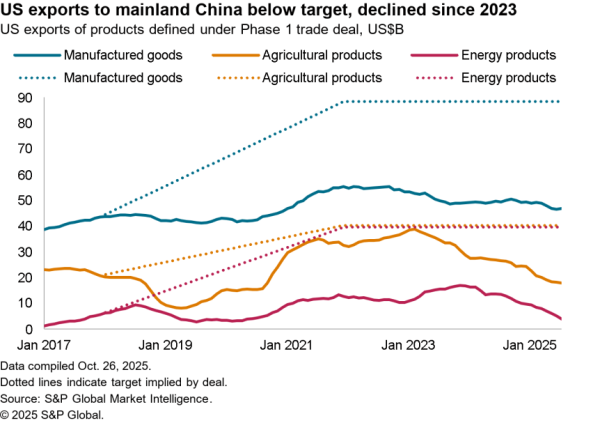The U.S. Court of International Trade has consolidated 3,579 appeals against section 301 duties on imports from China into a single case to be reviewed by three judges. The tariffs have proven controversial and required a significant exemption program, last discussed in Panjiva’s Aug. 20 research, where American businesses have endured hardship as a result of the duties.
Exemptions were granted for 33.8% of list 1 and 34.7% of list 2 duties which covered mostly components particularly for technology business. Exemptions for lists 3 and 45 were just 4.9% and 6.1% respectively, reflecting the higher proportion of consumer goods in the group.
While the legality or otherwise of the tariffs is still in question, the Biden administration also have to decide whether to leave them in place for geopolitical reasons.
President Biden has stated that there will be “extreme competition” with China but also a change in approach versus that of President Trump, Associated Press reports, while the administration has also noted that the phase 1 trade deal is under review. It’s unlikely, however, that any decisions one way or the other will be made within the next few months until the wider implementation of the administration’s China strategies are put in place.
Panjiva’s analysis shows that the pull of consumer demand has likely outweighed the push of tariffs in terms of U.S. imports from China, with shipments of products covered by list 1-3 tariffs of 25% having increased by 14.4% year over year in December, while imports of list 4A duties covered at a 7.5% rate increased by 8.4%. That’s far from outweighed the total effect of tariffs since their inception in 2018 with imports of list 1-3 products in December down by 24.3% while list 4A products are down by 18.2% versus 2017.

Source: Panjiva
Much of the recent resurgence can also be explained by a surge in demand for equipment used in the fight against COVID-19. One example is imports of air purifying pumps covered by list 1 tariffs since July 2018 (HS 8421.30.80) where U.S. imports from China jumped 475.4% year over year in December, Panjiva’s data shows, including shipments linked to Mitsubishi Heavy and Medify among others.
That came as imports from Mexico past their peak, dipping by 28.0% in December versus October, reflecting Mexican exports linked to Flextronics and Faurecia among others, while shipments from China increased by 66.8% over the same period.
The sheer complexity of the tariff package ranging from the court appeals and exemptions to uncertainty over policy direction is likely to continue to weigh on U.S. supply chains for much of 2021.

Source: Panjiva




